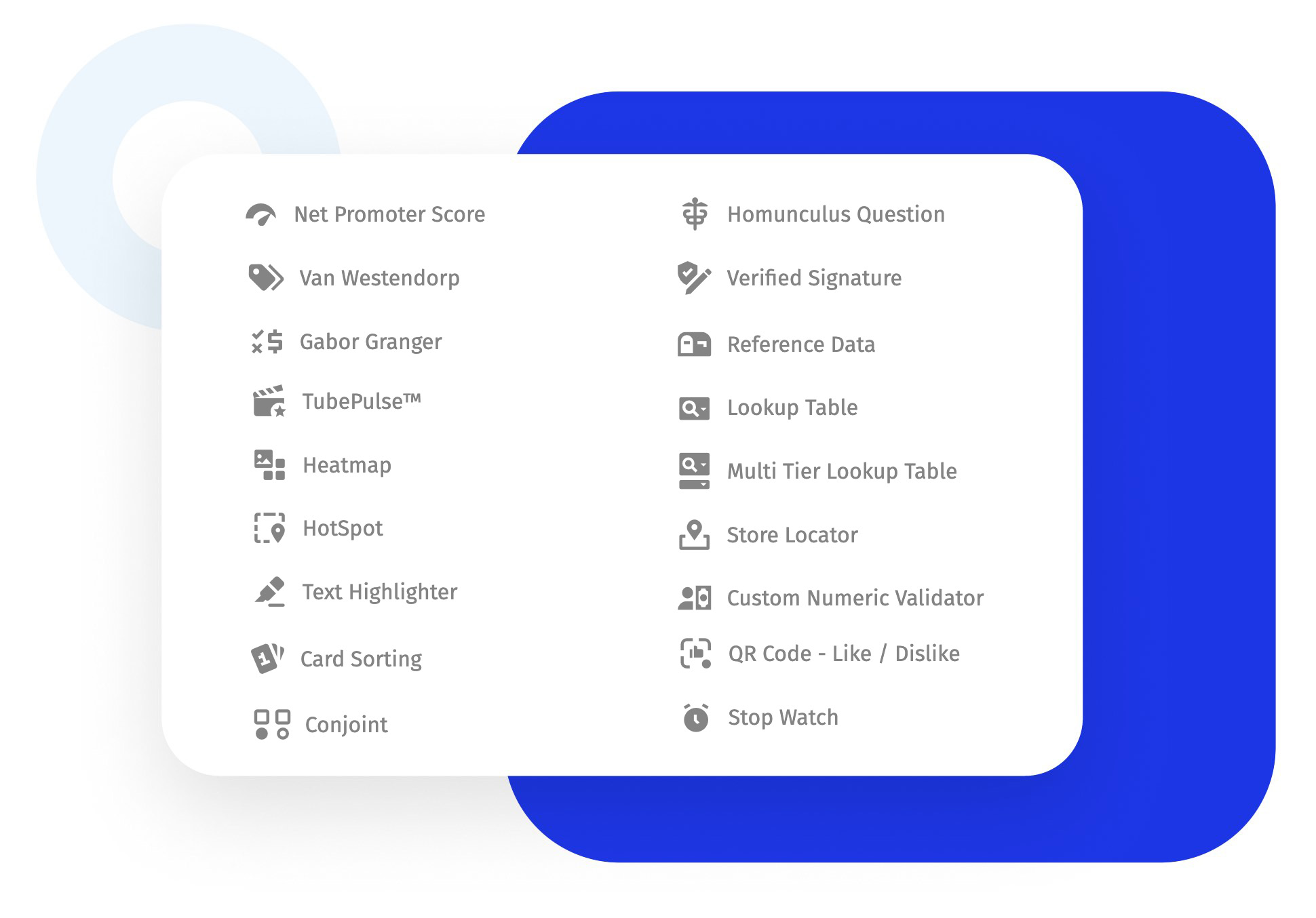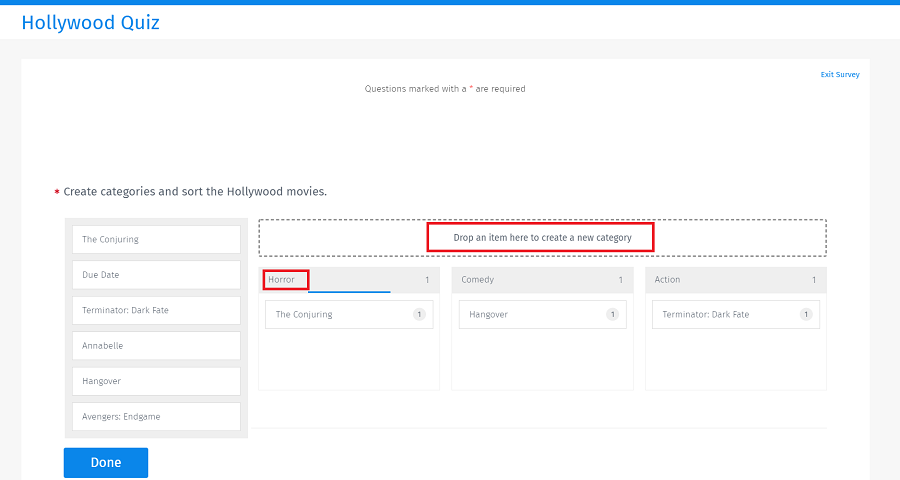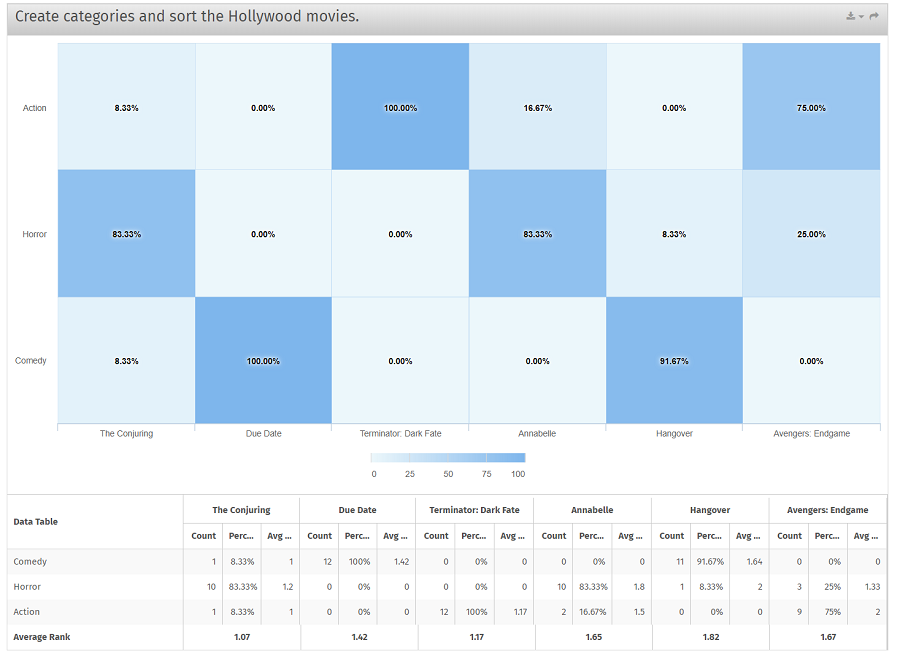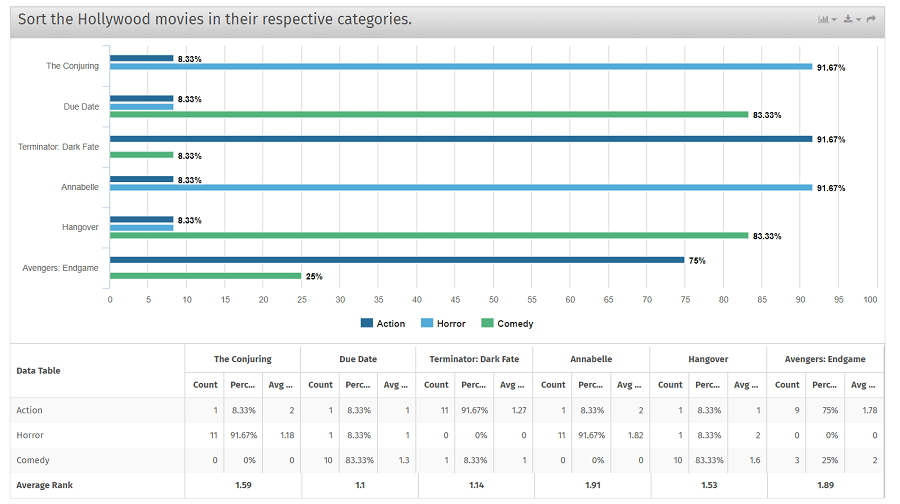These questions are highly engaging and require a more in-depth level interaction with the survey, which means they are preferred to question types that use radio buttons, single select, etc.
For example, if an online furniture retailer is launching a new wardrobe range, there would be an eagerness to know the micro-level product specifications that would retail best. The obvious questions would revolve around functionality, colors, specifications, price-point, etc. Respondents provide bucketed information about what is most important to them, and this helps club information about what features are most relevant and the ones that are not important.
Uses of card sorting in surveys
The most significant use of card sorting surveys is the ability it provides organizations to understand the most sought after product features and services. Answer options when bundled together, show weighted importance, either purely by line items or by percentages. Sorting items into categories provides the ability to get direct feedback about answer options in numerical value, which provide for actionable insights.
A card sorting survey also engages respondents and elevates user-experience. These two factors are a perfect remedy to reduce survey fatigue. Variations of card sorting make this question highly interactive and actionable insight collection becomes easy.
Types of card sorting survey questions
There are two types of card sorting in surveys. Both of them offer different kinds of insights for various reasons. They are:
Open card sorting: In open card sorting, the respondents have the freedom to bucket answer options into any answer options that they would like. There's scope for collect open-ended feedback or bucket options that the brand hadn’t even thought of at the outset.
Closed card sorting: In a closed card sort, you define your categories for respondents to place answers. This method offers greater control over the data. It also helps to derive direct insights from the answers in a planned direction.
Examples of card sorting in a survey
An easy to understand example of a card sort research study is placing Hollywood movies under different genres.
In open card sorting, respondents define their buckets to place the movies under.

The dashboard for this method is in the form of weighted buckets that have a percentage associated with them.

In closed card sorting, respondents drag and drop answers under pre-defined buckets.

This dashboard is in the form of weighted bar graphs.

Advantages of creating surveys with card sorting
There are many advantages to using card sorting in surveys. Some of the most prominent benefits are:
Ability to focus on essential aspects: The card sorting question is vital to the insights collection process because the buckets concentrate on crucial elements and provide information on what you expect to find. A brand can understand the features and services that most matter to their customers.
Draw customer insights: You can see how different customer groups with different demographics respond to various features and feature buckets. Because card sorting is a highly interactive question, it provides the ability to draw granular customer insights and helps with understanding the buyer audience and gauging user experience.
Targetted marketing and spend: Market to the relevant audience and spend money in the right matter. Create marketing campaigns that are effective and impactful because you know exactly who and what to market to.
Identify market dynamics: Understand price sensitivity and how different customers react to different price points. This question type helps to identify market dynamics and also optimum pricing for the features and services on offer.
Prioritize features and services: With the help of card sorting, answer options identify as must-have, good to have, and could be missed. The audience defines the importance of features and services, and the brand prioritizes these.
How to use card sorting in surveys surveys?
To use card sorting in surveys, check out our help file on open card sorting and the help file on closed card sorting.
Survey Software Easy to use and accessible for everyone. Design, send and analyze online surveys.
Research Suite A suite of enterprise-grade research tools for market research professionals.
Customer Experience Experiences change the world. Deliver the best with our CX management software.
Employee Experience Create the best employee experience and act on real-time data from end to end.









